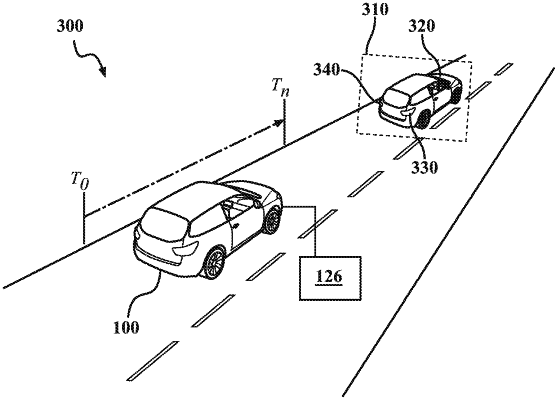| CPC G06V 20/56 (2022.01) [B60R 11/04 (2013.01); G06T 3/0093 (2013.01); G06T 7/337 (2017.01); B60R 2300/303 (2013.01); G06T 2207/20084 (2013.01); G06T 2207/20221 (2013.01); G06T 2207/30252 (2013.01)] | 20 Claims |

|
1. A vehicle light classification system, comprising:
a processor; and
a memory communicably coupled to the processor and storing:
a semantic keypoint module including instructions that when executed by the processor cause the processor to: 1) receive, from an image capture device, a sequence of images of a scene that includes a view of a vehicle with lights, and 2) determine, based on inputting the images into a first neural network, both semantic keypoints, in the images and associated with the lights, and classifications for the semantic keypoints wherein a semantic keypoint, of the semantic keypoints, corresponds to a single pixel near a center and away from an edge of an object in an image of the images and the first neural network is a deep neural network; and
a classification module including instructions that when executed by the processor cause the processor to: 1) obtain difference images that are each a difference between successive images from among the sequence of images, the successive images being aligned based on their respective semantic keypoints, and 2) determine a classification of the lights based at least in part on the difference images by inputting the difference images into a second neural network that generates a feature vector.
|